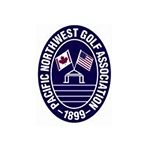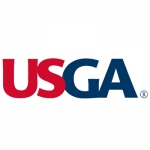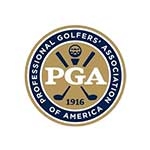Rule of the Month: Move It or Lose It
By Sr. Rules Officials: Pete Scholz and Terry McEvilly
Click Here for the Rule of the Month Archive
Objects and Things on the Course That May be Moved
One of the guiding principles behind the Rules is to play the course as you find it. However, to make the playing conditions as enjoyable as possible, the Rules allow many items, both on or off the course, to be moved if they impede a swing or line of play.
While the Rules cover both natural and artificial objects, they are treated differently and every golfer should be aware of what can be moved and any precautions that should be taken. Additionally, a quick glance at the Notice to Players provided by the Committee in charge of the competition is always a good idea as certain movable objects may have been designated as integral parts of the course or immovable.
Test your knowledge regarding objects that may or may not be moved with the following questions.
Questions: True / False
- A pine cone and a discarded pop can lie in the same bunker as the player’s ball. The pop can (movable obstruction) may be removed but the pine cone (natural object) must not be moved prior to making a stroke.
- A removable penalty area stake that interferes with the line of play must not be removed if the ball lies in the penalty area.
- A ball at rest on the putting green must not be marked and lifted while another ball is in motion to prevent the ball from deflecting the ball in motion.
- After carefully backing into a bush to take a stance for a stroke, the player must not tuck branches behind his or her body that obscures the player’s vision of the ball, or that interfere with the swing.
- A gate in a boundary fence must not be opened to eliminate interference.
- A removed flagstick laying on the ground may be lifted to prevent a ball in motion from being stopped or deflected by it.
- A bunker rake laying on the ground may be lifted to prevent a ball in motion from being stopped or deflected by it.
- Except when a ball is in motion, an obstruction (artificial object) may be moved provided it can be moved without unreasonable effort and without damaging the obstruction or the course.
- A player may lift his or her ball in the general area of the course if he or she believes it interferes or assists another player.
-
Temporary water that has accumulated from irrigation may be removed by the player from the teeing area and putting green only.
Answers:
- False. Rules 15.1a and 15.2a. Both items may be removed from the bunker or anywhere else on or off the course. However, if the ball is moved while removing a loose impediment (pine cone), the player incurs a one stroke penalty, except when the ball is on the putting green. In both cases the ball must replace the ball on its original spot. This question highlights the difference between a natural object and an artificial object (pop can), in that, if the ball is moved while removing the artificial object, there is no penalty and the ball must be replaced.
- False. Rule 15.2a and the Definition of Obstruction. A removable penalty area stake may always be removed. Even if the ball lies in the penalty area. However, out of bounds stake are treated differently and they must not be moved to eliminate interference.
- False. Rule 11.3. A ball at rest on the putting green may be marked and lifted for any reason including when another ball is in motion. Please note that the spot of the ball must be marked before lifting it. Failure to do so will result in a one stroke penalty and the ball must be replaced on the original spot. If the original spot is unknown, it must be estimated and the ball replaced on the estimated spot.
- True. Rule 8.1b and Interpretation 8.1b/4. It is required in the Rules that a player must except the conditions where his or her ball came to rest after a stroke and must use the least intrusive course of action to get to the ball and take a stance. Further elimination of interference is a breach and results in a loss of hole penalty in match play or two penalty strokes in stroke play.
- False. Rule 15.2a and Interpretation Boundary Object/2 By definition, a gate in a boundary fence is not part of the boundary object and may be opened or closed to eliminate interference.
- True. Rule 11.3. While most movable obstructions must not be moved when a ball is in motion and the object might deflect the ball, there is an exception in the Rule that allows any player’s equipment, a ball at rest on the putting green and a removed flagstick to be moved. See question #7.
- False. Rule 11.3 and Interpretation 11.3/1. While some objects, such as a flagstick or player’s equipment, may be moved to prevent a ball in motion from striking them, other objects must not be moved if the movement of the object could have an effect on where the ball comes to rest. In the case presented, the rake must not be moved. See question #6.
- True. Rule 15.2 and Definition of Movable Obstruction. Obstructions (artificial objects) are treated as movable obstructions if they can be moved without unreasonable effort and without damaging the object or course. Otherwise, the object is treated as immovable and the player may be allowed a different option for relief. It is important to note that exceptions to this definition include any objects that the Committee has declared an integral part of the course and boundary objects. Both of which must not be moved to eliminate interference.
- False. Rule 15.3b. When the ball is anywhere other than the putting green, a player is not allowed to lift it simply because he or she feels it might assist another player. Likewise, a ball anywhere else but the putting green must not be lifted simply because the player believes it interferes with another player. The owner of the interfering ball must be asked to lift it by the other player. In stroke play, the player that is asked to move his or her ball because it interferes with another player’s intended play may play first rather than lifting the ball.
- False. Rule 6.2b(3) and 8.1. Part of this answer is true and part is false. A player is allowed to remove temporary water from the teeing area that the player must play from but is not allowed to remove water from the putting green. Temporary water on the putting green is considered an abnormal course condition and if the player’s ball lies on the putting green and the water interferes on the line of play, relief may be taken under Rule 16.1.








